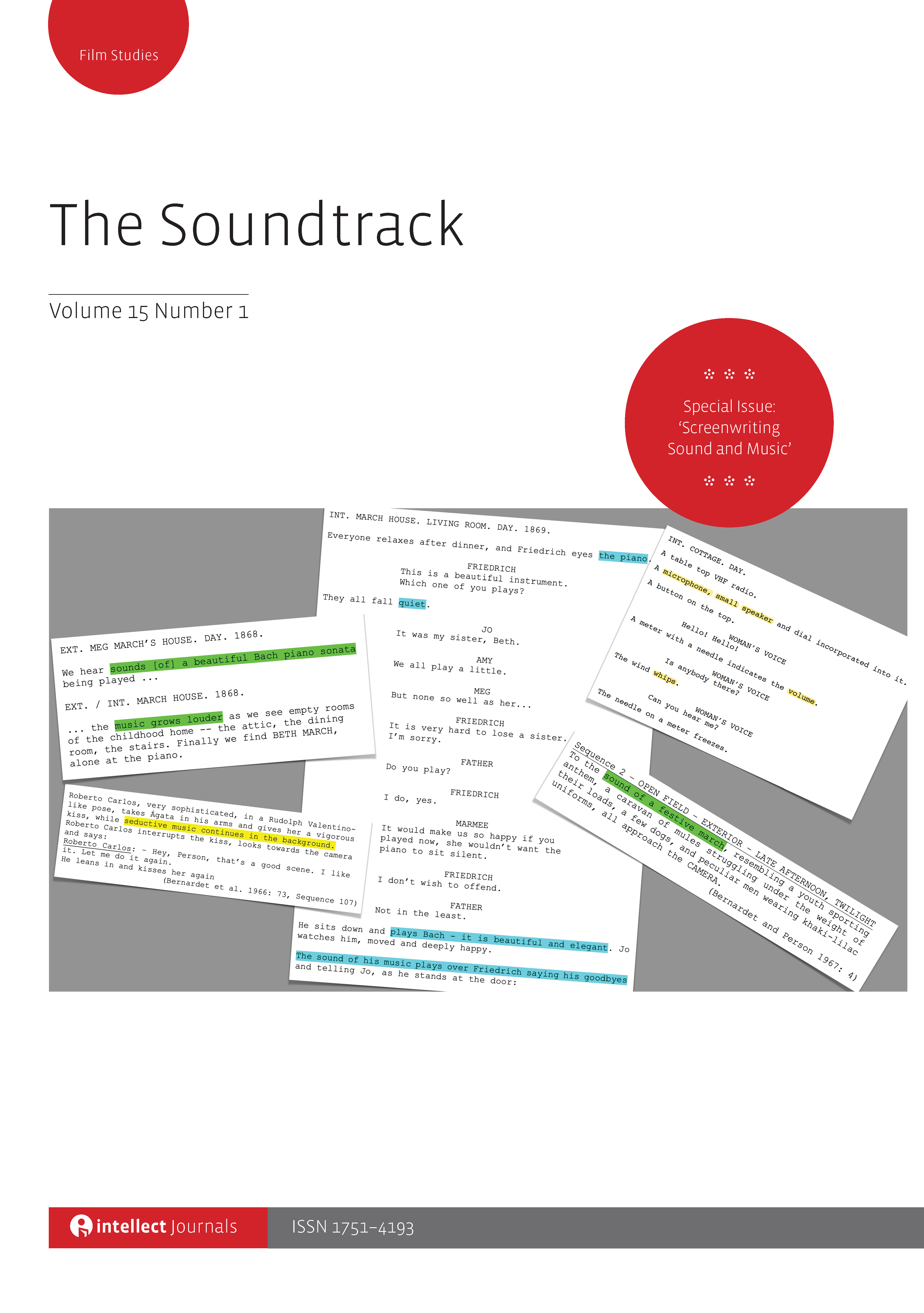- Home
- A-Z Publications
- Soundtrack, The
- Previous Issues
- Volume 2, Issue 2, 2009
Soundtrack, The - Volume 2, Issue 2, 2009
Volume 2, Issue 2, 2009
-
-
Cold world: the deathly void of sound
More LessBy David ToopThe essay begins by proposing an auditory engagement with the paintings of Caravaggio. By interpreting visual representations of sound and listening in visual media, it is possible to construct a more comprehensive history of listening prior to the invention of sound recording in the late nineteenth century. A relationship is suggested between seventeenth century devices such as Samuel van Hoogstraten's Peep Show and the beginnings of cinema. The essay also makes links between indications of microsound in painting and the growing importance of hyper-real sound design in American cinema between 1967 and 1979. The use of pop songs in films after Kenneth Anger's Scorpio Rising is explored, leading to a mapping of the connections between quasi-documentary narrative film, hip hop sampling, crime fiction and David Simon's television series, The Wire.
-
-
-
The equivalence of space and music: Eisenstein and Frank Lloyd Wright
More LessAn unexpected meeting of minds is presented in this article: the film director Sergei Eisenstein and the architect Frank Lloyd Wright meet in ideas, and in audiovisual thought. These convergences underline the concept of cinema being not just a visual medium, nor just accompanied by sound, but an organically audiovisual medium.
-
-
-
School of Sound Symposium, London 2009; keynote lecture
More LessComposer, radio artist and sound ecologist, Hildegard Westerkamp focuses on her own compositional work and its inherent connection to the visual. I'll trace the process of listening from the first step of recording to the presentation of the finished piece and how the sounds themselves, in the context of this type of listening, guide a piece into what it becomes its structure and its message. My intention is to build connections between the professional ear (of the sound designer, composer or director), the media ear (of the audience) and the daily life ear (of all of us).
-
-
-
The omnipresent soundscape of drones: reflections on Bill Viola's sound design in Five Angels for the Millennium
More LessAnalyses of the works of Bill Viola have been extensive, which often emphasize his use of time-distortion technology, religious iconography, and dazzling imagery. The consideration of his approach to sound, however, has only been sporadic. This article investigates Viola's interest in drones in particular, and examines the interaction between drones and slow-moving images of figures in water. A survey of Viola's earlier works demonstrates that drones have played a significant role in his artistic production. Using Five Angels for the Millennium (2001) as a starting point, this article attempts to identify and analyse that role, and argues that it is related to his exploration of time and expanded perception. This article places Viola's use of sound squarely within recent debates about new media art's emphasis on embodied experience, temporality, and immersion.
-
-
-
Electronic realities and identity fugue in Chris Petit's Radio On (1979)
More LessBy Matthew PinkChris Petit's Radio On (1979) is an excellent example of how to achieve a great deal through the use of film sound with relatively scarce financial and production resources. As such it serves as a fascinating document for film-makers starting out, who are interested in the possibilities of storytelling through a subtle deployment of sound. This article is about how Petit's use of the songs and the personae of Kraftwerk and David Bowie combine with his subtle variation of auditory perspectives to create an electronic reality where music and sound serve to reveal ideas of identity.
-
-
-
Three collections
More LessFilm, a Sound Art, Michel Chion (trans. Claudia Gorbman), (2009) New York: Columbia University Press, 533 pp., ISBN 978-0-231-13777-5, Paperback, 22.50
Lowering the Boom: Critical Studies in Film Sound, Jay Beck and Tony Grajeda (eds), (2008) USA: University of Illinois Press, 342 pp., ISBN 978-0-252-07532-2, Paperback, 13.99
Sound and Music in Film and Visual Media, Graeme Harper, Ruth Doughty, and Jochen Eisentraut (eds), (2009) New York: Continuum Press, 877 pp., ISBN 978-0-8264-5824-7, Hardback, 90.00
-
Most Read This Month


